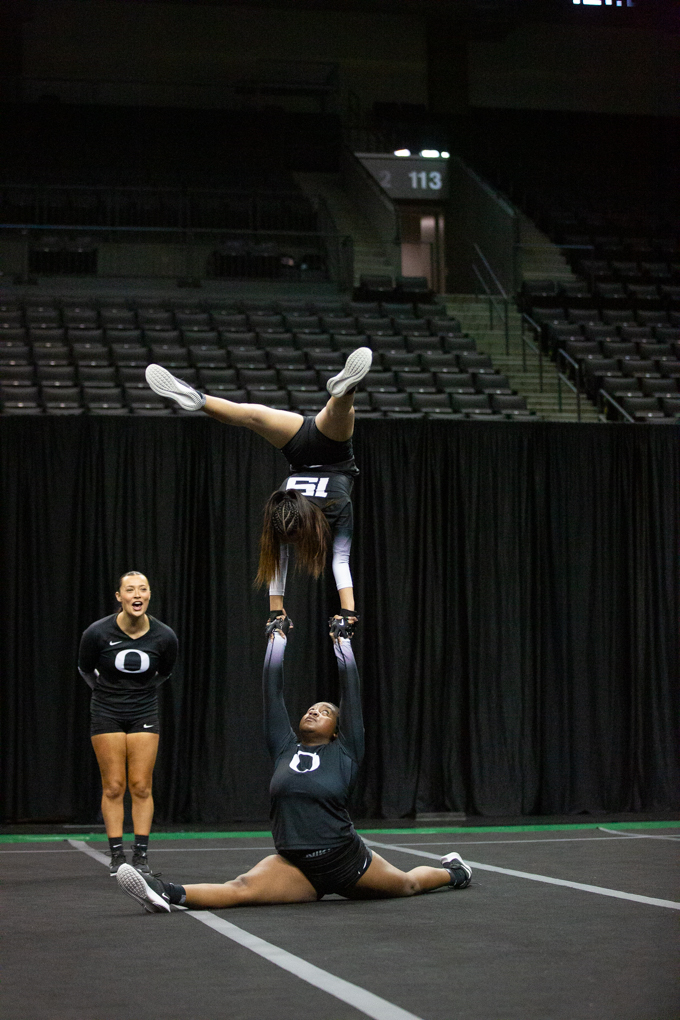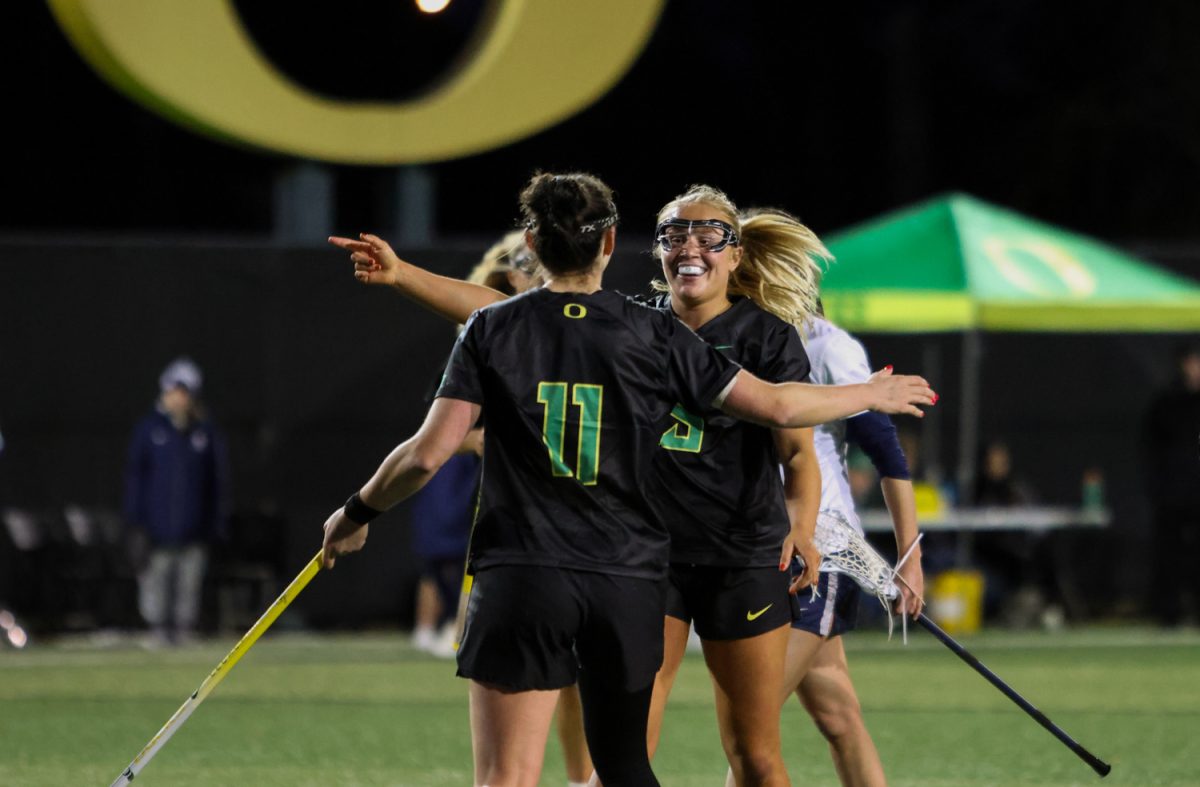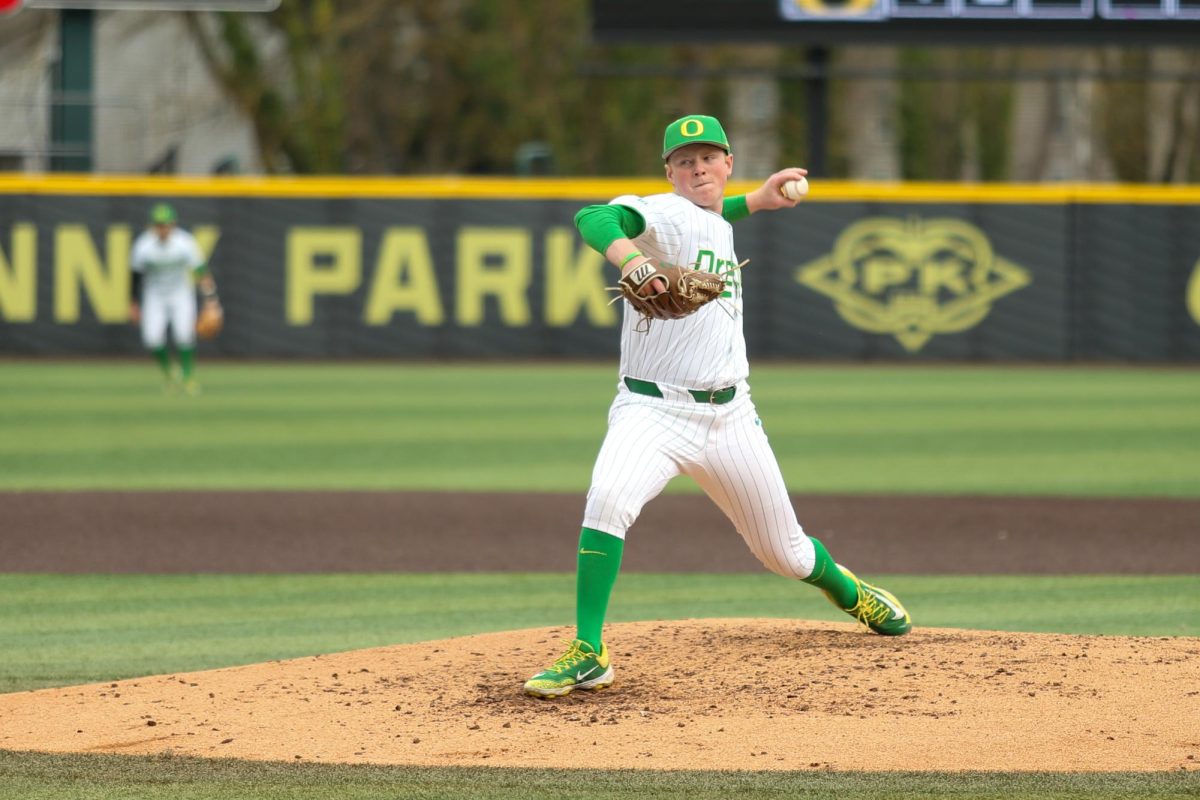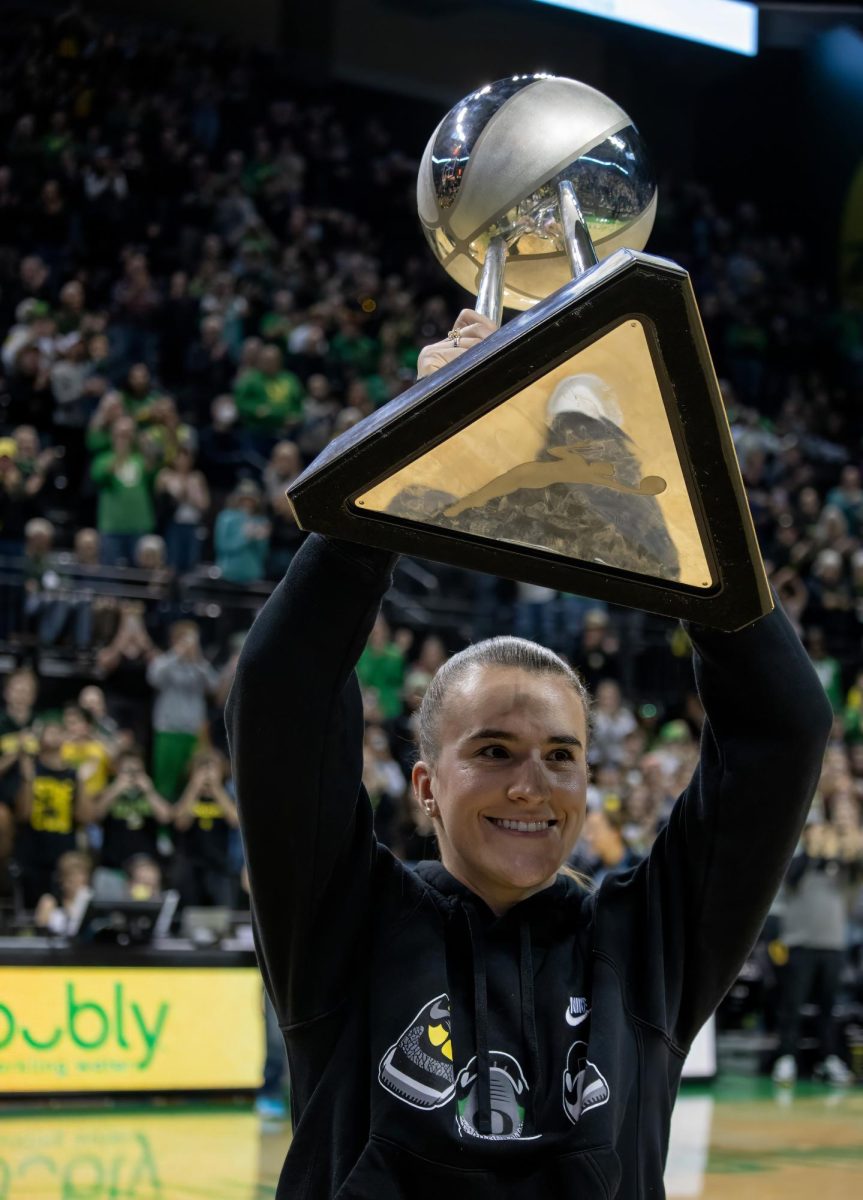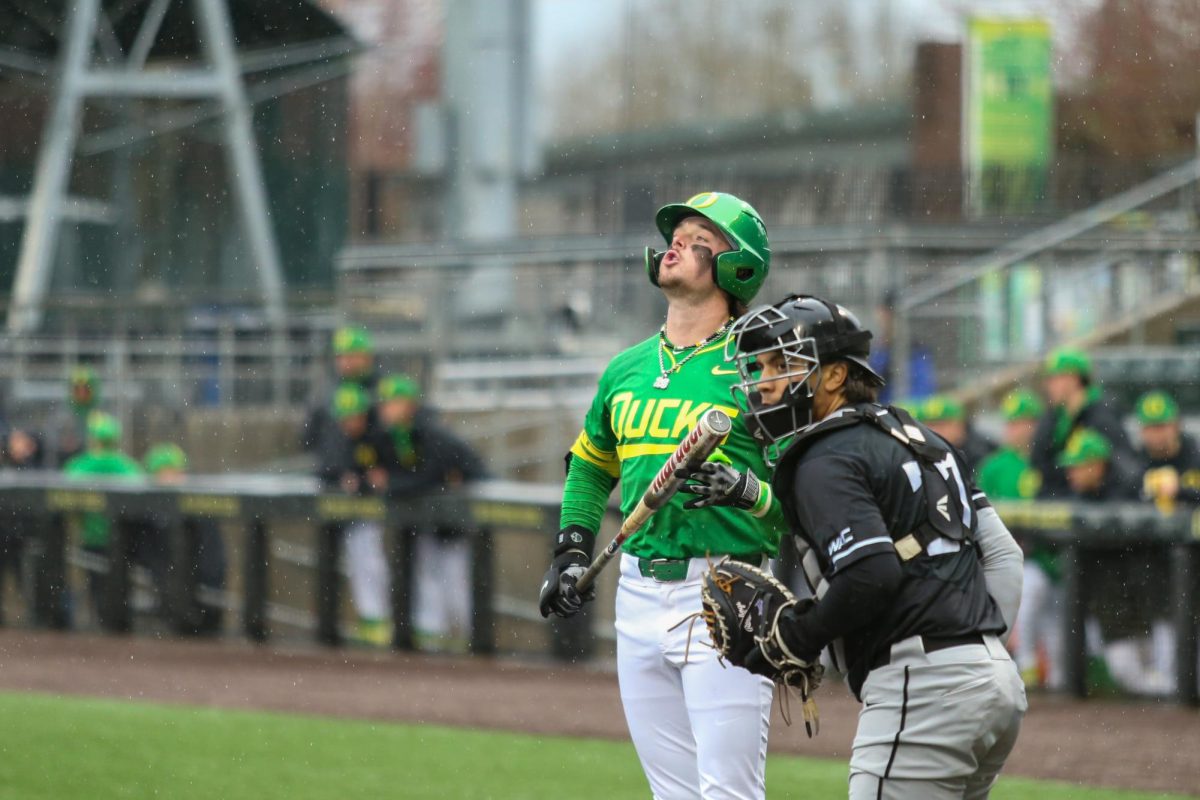In any sport, when the top two teams go head-to-head, it’s guaranteed to be a show — a mark-your-calendar, clear-your-schedule type of event. Saturday afternoon’s meet lived up to every expectation that those rankings imply. Oregon (1-1) was unable to erase the Bears’ (3-0) 30-meet win streak that dates back to a 2021 loss to the Ducks as it lost, 278.935-271.835.
The two programs have an extensive history — Baylor head coach Felecia Mulkey won four national championships at Oregon before moving to Waco, Texas, and the two have shared every title in NCATA history. Oregon struggled through its first meet on Feb. 10; it trailed through nearly every event before snatching a victory in the team event. “They really just pulled it out when they needed to,” said head coach Taylor Susnara after the team’s victory over Hawaii Pacific.
On Saturday, perfection would be necessary. Last year, the two schools met in the national championship, but Oregon fell to the Bears by just over 10 points as Baylor captured its eighth straight national title. Neither team could afford a mistake — an early red flag last meet for the Ducks was the reason they had to fight back against the Sharks — but the mistakes in this meet were much smaller.
The compulsory event was the picture of perfection that they needed: neither team dropped more than 1.3 points. Junior tumbler Rachel Furlong had perhaps the only noticeable mistake in the opening event — an added step on her landing in Oregon’s running tumbling heat — but that was the line. Oregon trailed after one event, 38.400-37.850, and it would once again be a come-from-behind effort for the Ducks.
The near-perfection continued into the acro event, where both teams attempted increasingly difficult skills — highlighted by Baylor’s seven-element heat, which had a start value of the full 10 points. Junior top Jordan Gruendler bent backwards into a mid-air ‘ring’ before balancing, arched, on one hand. The Bears grabbed 9.950 of those 10 points available.
Meanwhile, Oregon was held back by the smallest of mistakes — a shaky step from base Emilie Henningsen in the seven-element heat was the difference between Baylor’s 29.450and the Ducks’ 28.700, which kept the Bears ahead by just 1.300 points.
In the interim between their first two meets, Oregon focused on mental strength. “We’re going to do a lot of mental training over these next couple of weeks,” Susnara said. “[We’ll] hone in on some of the things that were a little shaky and figure out where our weaknesses might be.”
In the first pyramid heat, though, was where the Bears made their biggest mistake. Gruendler lost balance atop the pyramid while switching into a difficult one-handed pencil move — a skill that even Baylor doesn’t attempt often, where the top is inverted against the base, leaning off to one side.
Oregon had to avoid mistakes in order to jump ahead, and it did so with a near-perfect series of heats that scored 9.900, 9.700and9.850. Ahead of halftime, the Ducks erased that deficit as they headed into the break with a 0.400 point advantage. “I’m really happy with how the first half has gone,” Oregon head coach Taylor Susnara said on the ESPN+ broadcast. “We’ve had little things here and there, but overall we’ve been working on our mental strength and I think that showed up today.”
That mental training would come into play in the second half, which Susnara viewed as her team’s stronger event. Oregon kept its advantage through the toss event. Baylor began with a greater start value in Heat One — half a point at 9.9 to Oregon’s 9.4 — and a 10.0 start value in Heat Three, which allowed the Bears to claw back at the Ducks’ lead after solid performances from both schools.
Just a tenth of a point separated the two heading into the tumbling event — and with six heats, it would be Oregon’s best chance to extend its miniscule advantage ahead of the team event. “We upgraded our tumbling event for this meet, so I’m excited to see how they execute there,” she said at the half. The Ducks’ start values, then, matched Baylor’s for the event.
That meant that neither team would have the advantage purely on points available. Instead, the team that executed each skill best would find points. Each of the individual passes — more often than not a 10.0 start value — went head-to-head through the back half of the tumbling event. Oregon couldn’t hold its slim advantage through the tumbling event as Baylor opened up a 0.6 point advantage, and it would once again come down to its ability in the team event.
In the final event, Oregon was largely successful, but a mistake from junior Riley Watson meant that they’d depend on the Bears’ mistakes for a win. Baylor began with a roughly 1.5 point advantage in start value, and that boosted it to a 96.660 score, almost six points more than Oregon’s 90.106.
The two meet again in Eugene on April 5, where their home-and-home series will conclude. Before then, Oregon faces No. 4 Quinnipiac on March 16 at Matthew Knight Arena before traveling to Hawaii Pacific the following Sunday. If the two are still atop the NCATA rankings heading into that meet — the Ducks’ penultimate competition before the national championships — it’ll likely be the deciding factor when they head to West Virginia to compete for a first national championship since 2014.




